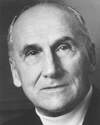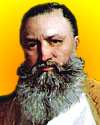
On 23 July 1867, Griffith Brewer was born, the first Englishman to fly in an airplane. While visiting America, he was a guest passenger with Wilbur Wright. It was the beginning of a lifetime friendship during which Brewer made other visits and had much firsthand knowledge of the Wrights' work.
Thereafter, Brewer staunchly championed the Wrights' priority against the over-reaching, competing claims of Samuel Langley as the first to achieve powered airplane flight. That was no easy task, as Langley was Secretary of the Smithsonian Institution, a formidable publicity machine.
Brewer lectured to the Royal Society in England, wrote to the New York Times. In a letter published in the 9 Mar 1922 issue of the journal Nature, The Langley Machine and the Hammondsport Trials, Brewer attempted to set the record straight. Although it was two decades after the Wrights' first flights, as you read his letter, you will see from the response printed below it, that it was still not an easy task.

On 23 Jul 1906, Marston Bates was born, an American zoologist remembered for his studies of mosquitoes and tropical diseases. Today's book pick is: The Nature of Natural History, by Marston Bates, which he wrote for the non-biologist. In this timeless work, the author's strong interest in the tropics shows in his engaging descriptions, in a style that has been compared to David Attenborough's presentations on nature. Bates provides a good overview of the main issues that concern natural history, including the scientific naming and classification of organisms; the history of life on Earth in context with the geological time-scale; the development of the individual organism; the environment; the behavior of individuals and populations; reproduction; biotic communities; biological geography; adaptations; and evolution.
It is available from Amazon, typically about New from $6.95. Used from $2.95. (As of earlier time of writing - subject to change.)
 | The late Alan Gregg pointed out that human population growth within the ecosystem was closely analogous to the growth of malignant tumor cells within an organism: that man was acting like a cancer on the biosphere. The multiplication of human numbers certainly seems wild and uncontrolled… Four million a month—the equivalent of the population of Chicago… We seem to be doing all right at the moment; but if you could ask cancer cells, I suspect they would think they were doing fine. But when the organism dies, so do they; and for our own, selfish, practical, utilitarian reasons, I think we should be careful about how we influence the rest of the ecosystem. |
 | Sight is a faculty; seeing, an art. |
 | First were mainframes, each shared by lots of people. Now we are in the personal computing era, person and machine staring uneasily at each other across the desktop. Next comes ubiquitous computing, or the age of calm technology, when technology recedes into the background of our lives. |
| Before you look at today's web page, see if you can answer some of these questions about the events that happened on this day. Some of the names are very familiar. Others will likely stump you. Tickle your curiosity with these questions, then check your answers on today's web page. | |
| Births | |
 | Vladimir Prelog, born 23 Jul 1906, was a Yugoslavian-born Swiss chemist who shared the 1975 Nobel Prize for Chemistry with John W. Cornforth for his work on the stereochemistry of organic molecules and reactions. By X-ray diffraction, he elucidated the structure of several antibiotics. What is stereochemistry? |
 | Theodore Schneirla, born 23 Jul 1902, was the foremost American comparative psychologist of the mid-1900s. He went so far in his “biphasic A-W theory” as to reduce all behavior to two simple responses: approach and withdrawal. We approach what causes pleasure, and we withdraw from what causes unpleasure or pain. His empirical work was based on the behaviour patterns of which animal? |
| Deaths | |
 | Sir William Ramsay (1852-1916) was a Scottish chemist who was a Nobel laureate (1904) “in recognition of his services in the discovery of the inert gaseous elements in air, and his determination of their place in the periodic system.” Can you name five of these “inert” gases that he either discovered or co-discovered? |
 | Isaac Merrit Singer (1811-1875) was the inventor of the continuous-stitch sewing machine in 1851. Singer was an itinerant machinist until 1851 when he designed an effective sewing machine using the basic features found on modern machines. A patent infringement settled with Elias Howe, another sewing machine inventor, did nothing to deter Singer. The company he founded was, within the decade, the world's largest sewing machine manufacturer. Singer gained 20 additional patents, but his biggest invention was the new way of marketing to consumers. He spent millions of dollars on advertising, made purchase affordable by offering installment credit, and provided after-sale service. What was Singer's nationality? |
| Events | |
 | On 23 Jul 1937, the isolation of pituitary hormone was announced (Yale University). It is the master endocrine gland in vertebrate animals. The hormones secreted by the pituitary stimulate and control the functioning of almost all the other endocrine glands in the body. Pituitary hormones also promote growth and control the water balance of the body. Where in the body is the pituitary gland found? |
 | On 23 Jul 1903, in Detroit, the Ford Motor Company sold its first automobile. The Ford Model A featured an internal combustion engine designed and manufactured by a little-known Michigan machinist, Henry Ford. How many cylinders were in the engine? |
Fast answers for the previous newsletter for July 22: being of Jewish descent, he was forced to resign when Hitler took power • Gregor Mendel • he invented the “continuous wave” which superimposed a sound waveform onto a radio wave for transmission • Brooklyn or Niagara River Bridges • Shoemaker-Levy • 11 years old • Wiley Post.
 If you enjoy this newsletter, the website, or wish to offer encouragement or ideas, please send feedback by using your mail reader Reply button.
If you enjoy this newsletter, the website, or wish to offer encouragement or ideas, please send feedback by using your mail reader Reply button. Your click on a Facebook, StumbleUpon, or other social button on the site webpages is also a welcome sign of appreciation. Thank you for using them.
© This newsletter is copyright 2020 by todayinsci.com. Please respect the Webmaster's wishes and do not put copies online of the Newsletter — or any Today in Science History webpage. (If you already have done so, please remove them. Thank you.) Offline use in education is encouraged such as a printout on a bulletin board, or projected for classroom viewing. Online, descriptive links to our pages are welcomed, as these will provide a reader with the most recent revisions, additions and/or corrections of a webpage. For any other copyright questions, please contact the Webmaster by using your mail reader Reply button.
--
If you do not want to receive any more newsletters, Unsubscribe
To update your preferences and to unsubscribe visit this link
Executive Real Estate Business Class
-
"It was like a man with wings. It wasn't like anything you'd see on TV or in a monster movie." ...
About the publisher
Search This Blog
Blog Archive
-
▼
2021
(585)
-
▼
July
(50)
- Newsletter for Saturday 31 July.
- Newsletter for Friday 30 July.
- Power off and play this summer!
- Newsletter for Thursday 29 July.
- Newsletter for Wednesday 28 July.
- Newsletter for Tuesday 27 July.
- Newsletter for Monday 26 July.
- Newsletter for Sunday 25 July.
- Newsletter for Saturday 24 July.
- Newsletter for Friday 23 July.
- Newsletter for Thursday 22 July.
- Newsletter for Wednesday 21 July.
- Newsletter for Tuesday 20 July.
- Newsletter for Monday 19 July.
- The Machines That Built America Premieres Tonight
- Newsletter for Sunday 18 July.
- Newsletter for Saturday 17 July.
- Newsletter for Friday 16 July.
- Newsletter for Thursday 15 July.
- Newsletter for Wednesday 14 July.
- Newsletter for Tuesday 13 July.
- On This Day for July 12 - Geraldine Ferraro design...
- Newsletter for Monday 12 July.
- Inventing ‘The Machines That Built America’
- On This Day for July 11 - Duel between Aaron Burr ...
- Newsletter for Sunday 11 July.
- On This Day for July 10 - Telstar 1 launched, John...
- Newsletter for Saturday 10 July.
- On This Day for July 9 - Catherine the Great assum...
- Newsletter for Friday 9 July.
- New Season! Hope, Through History Podcast
- On This Day for July 8 - Vasco da Gama's first voy...
- Newsletter for Thursday 8 July.
- Ending soon: savings that pop! 🎆
- On This Day for July 7 - Hawaiian Islands annexed ...
- Newsletter for Wednesday 7 July.
- On This Day for July 6 - Anne Frank forced into hi...
- Newsletter for Tuesday 6 July.
- On This Day for July 5 - Israel's Law of Return pa...
- Newsletter for Monday 5 July.
- On This Day for July 4 - Declaration of Independen...
- Newsletter for Sunday 4 July.
- July 4th Sale at the HISTORY Store!
- On This Day for July 3 - Battle of Gettysburg ende...
- Newsletter for Saturday 3 July.
- On This Day for July 2 - Civil Rights Act signed, ...
- Newsletter for Friday 2 July.
- July 4th savings that pop!
- On This Day for July 1 - Dominion of Canada establ...
- Newsletter for Thursday 1 July.
-
▼
July
(50)
-
Blogroll
-
About
HistoryFact










0 comments:
Post a Comment